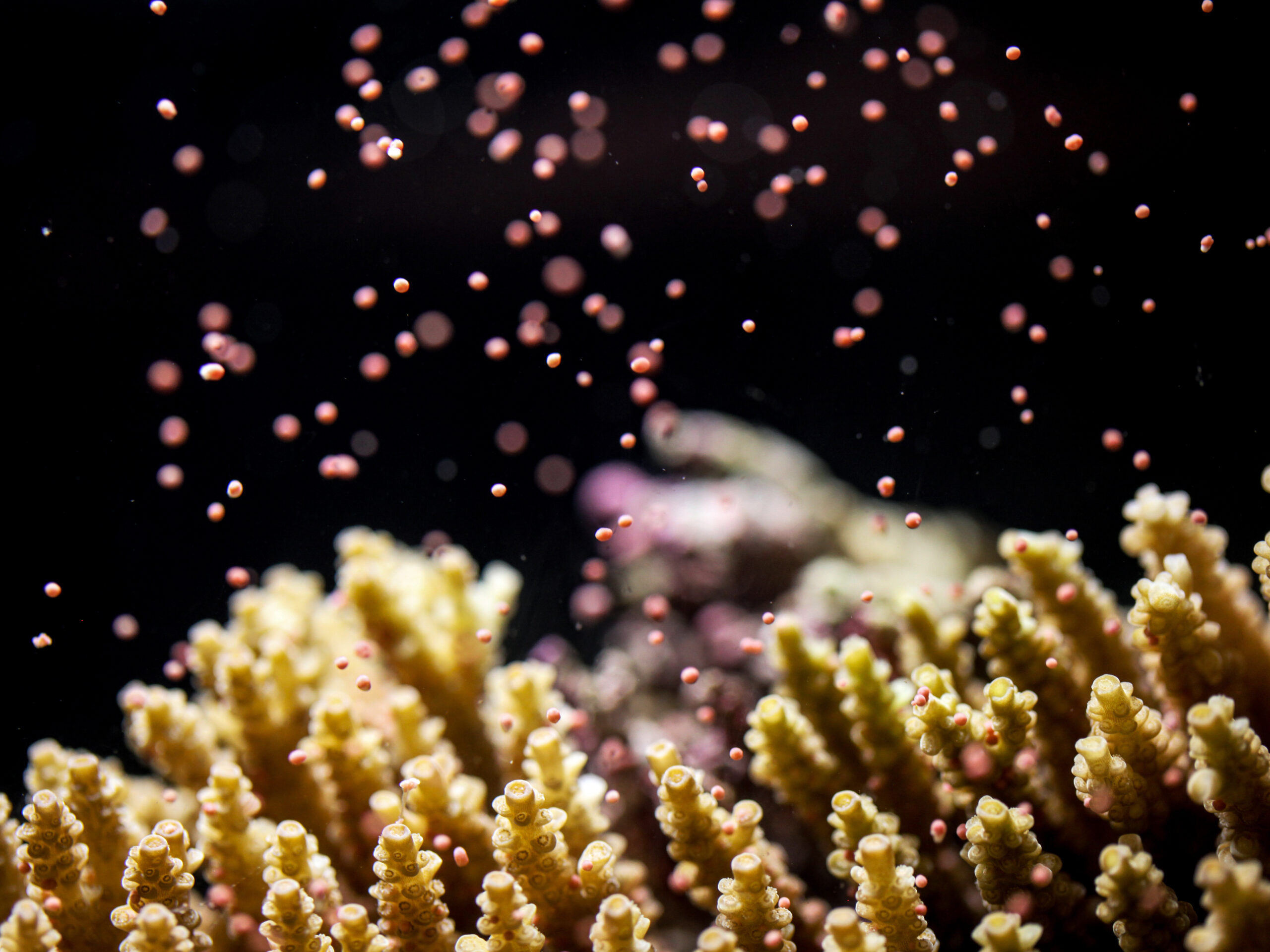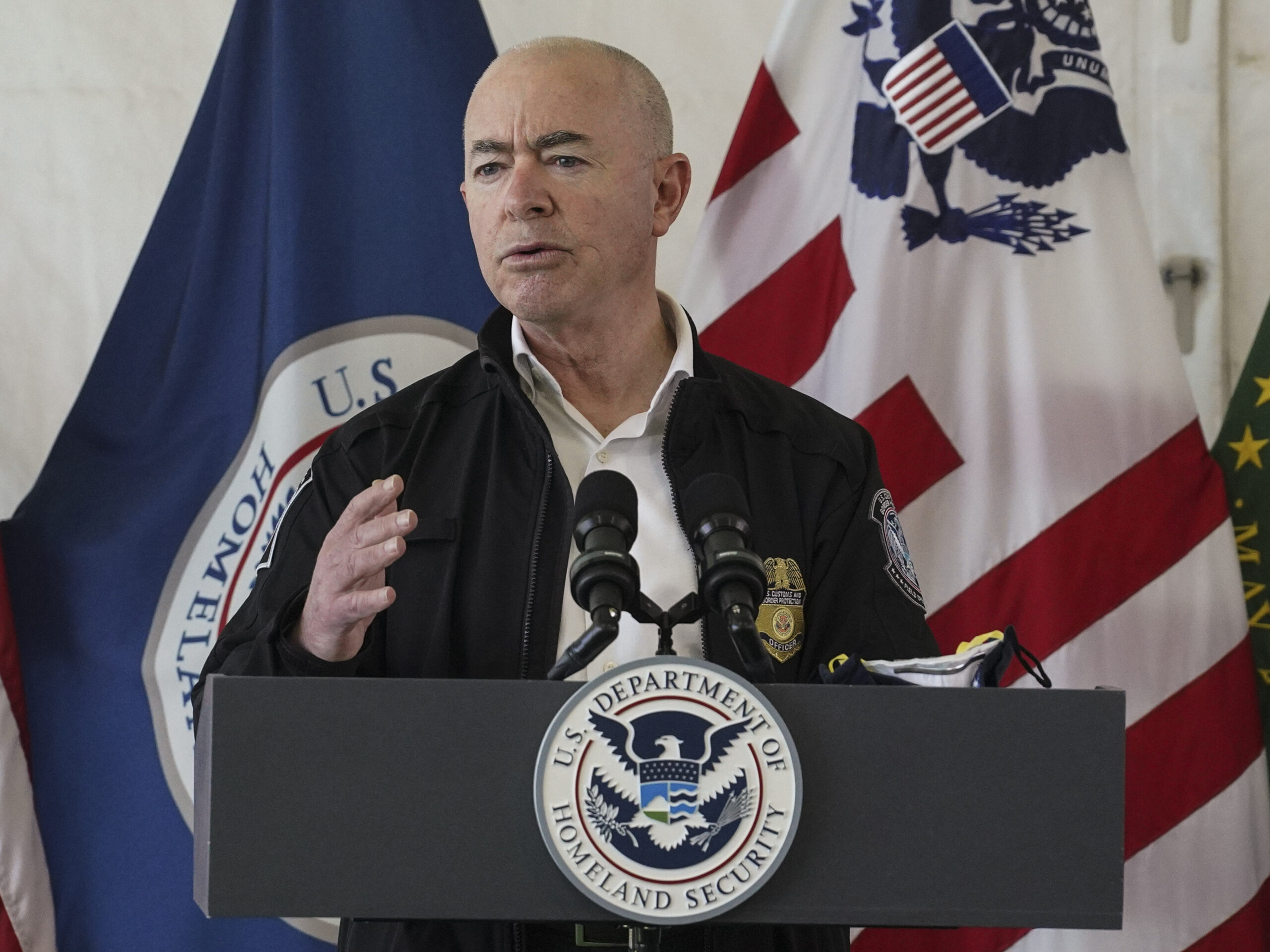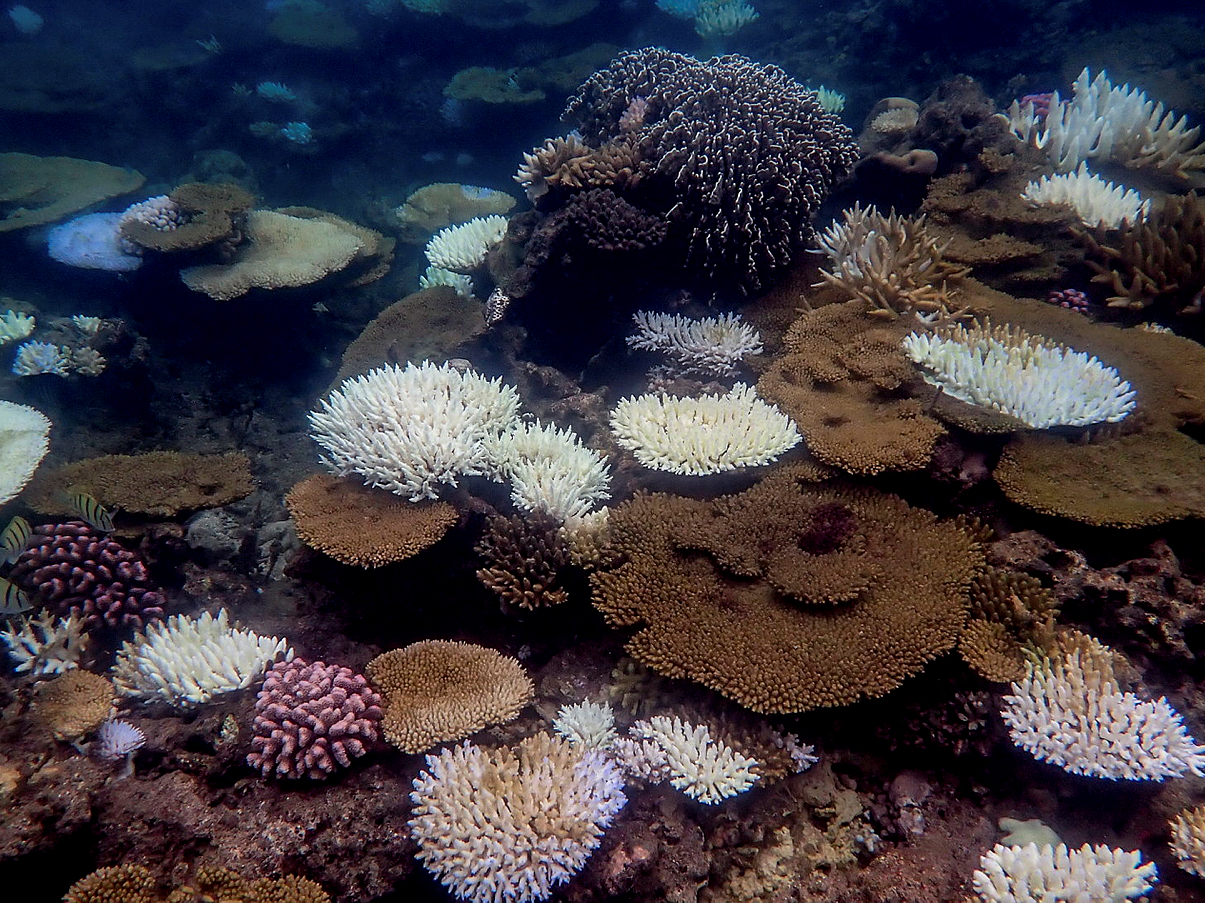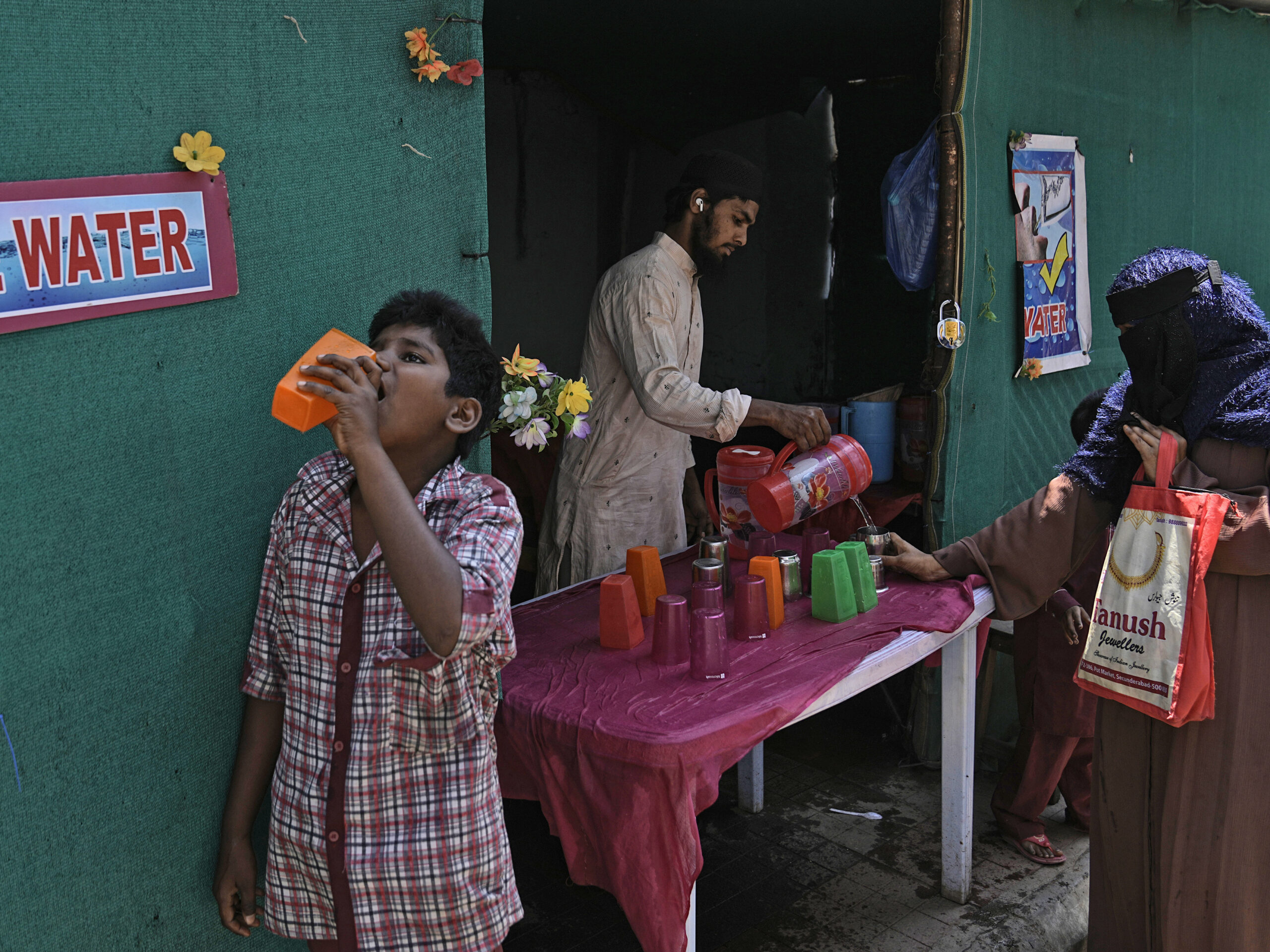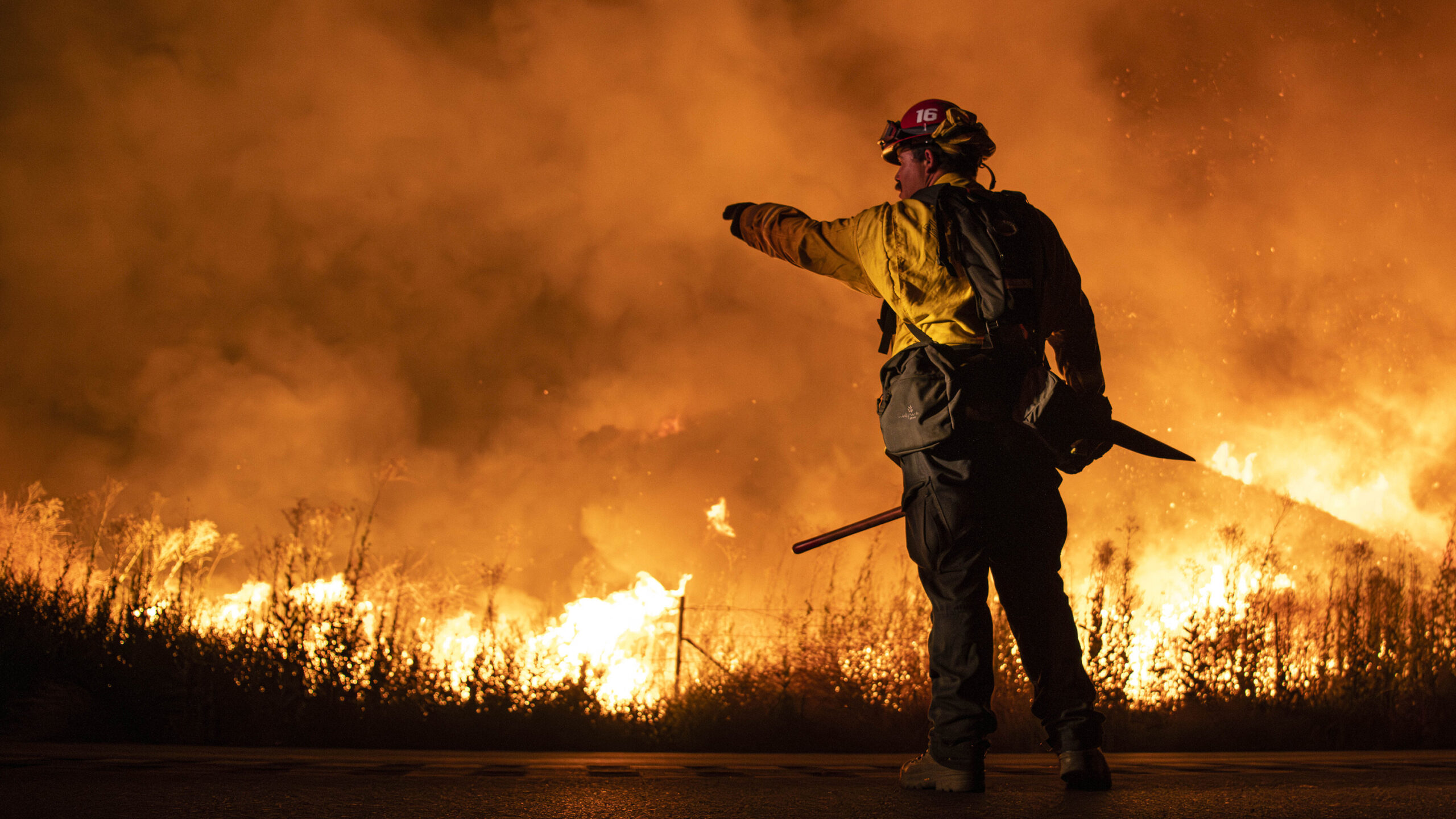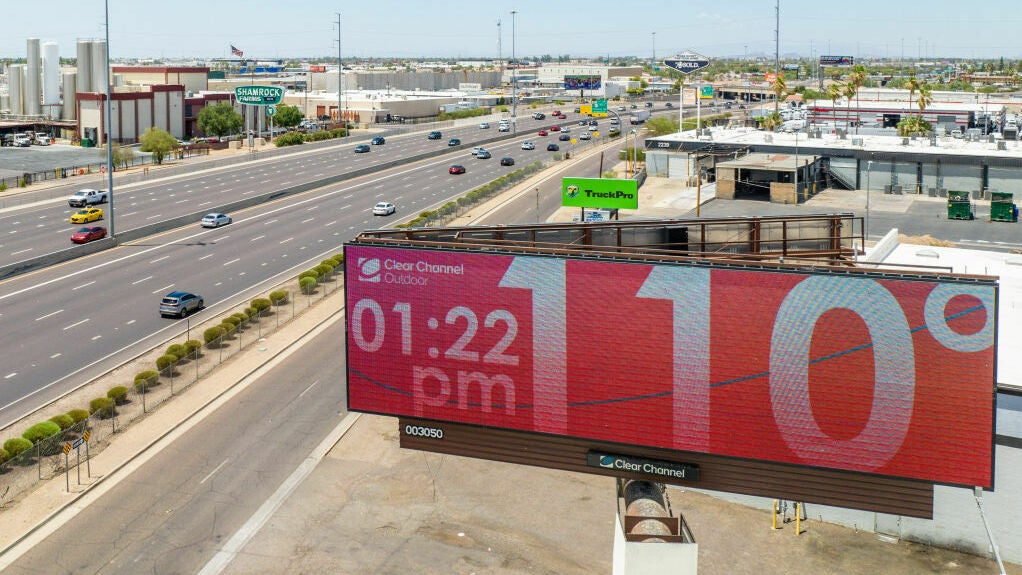Just after the full moon, Annika Lamb goes into work late at night. She puts on a headlamp with a red light and peers into large tanks of water in a marine science lab.
It’s a special week. Inside the lab, corals with delicate branching arms are about to undergo a vital ritual. Only one night ayear, they release eggs and sperm that fill the water like confetti and that will combine to create the next generation of reef builders.
“You’re not really sure what’s going to happen,” Lamb says. “There’s a lot of magic. There’s a lot of unknown.”
Stay informed on the latest news
Sign up for WPR’s email newsletter.
Lamb is standing by patiently to scoop up the genetic bundles, in the hope that these corals hold the key to surviving an ocean that is rapidly heating up. She’s part of a team at the Australian Institute of Marine Science, located on the east coast of Australia, that is breeding corals to endure an increasingly hostile planet – what some have nicknamed “super corals.”
Since corals only spawn at night, the red headlamps help keep the lab dark. The lights seem like sultry mood lighting for the corals–and a red alert for climate change at the same time.
Australia’s Great Barrier Reef, the largest in the world, is currently undergoing its fifth mass bleaching event in the last eight years. Corals bleach, turning a ghostly white color, when they’re under stress from hotter temperatures. If the heat subsides, corals can recover. But long periods of heat and repeated marine heat waves cause corals to die, wreaking havoc on one of the most biodiverse ecosystems on the planet.
It’s estimated that a quarter of all marine species depend on coral reefs. Biologists say that’s a best guess, since life on reefs is so dense, it’s very likely there are species yet to be discovered. Reefs are also vital for humans. Half a billion people depend on coral reefs for food, livelihoods and flood protection, since reefs can dissipate the power of waves hitting shore.
If climate change continues at its current rate, the outlook for coral reefs is grim. Within a few decades, the world is expected to hit 1.5 degrees Celsius (2.7 degrees Fahrenheit) of warming on average, a threshold where the majority of the world’s coral reefs are not expected to survive.
In the face of that threat, scientists around the world are searching for corals that can tolerate extreme heat better, selectively breeding them to help reefs adapt faster than nature could. The big question is how much time it will buy coral reefs, given how rapidly temperatures are rising.
“Coral reefs are amongst the most vulnerable of our ecosystems to climate change,” says David Wachenfeld, research program director at the Australian Institute of Marine Science, just outside of Townsville, Queensland. “There are certainly very plausible future scenarios where, with the best science in the world, we won’t be able to protect the Great Barrier Reef.”
Putting corals to the test
The corals inside Annika Lamb’s tanks are all contenders to help reefs survive, but not all of them are winners. They’re labeled with a ranking, like athletes after a race. They’re housed at the National Sea Simulator, a vast facility of tanks where scientists have figured out the art of keeping the delicate animals alive.
These ranked corals have gone through tests, placed into hotter water to see how they perform. When ocean temperatures rise, it upsets the cornerstone relationship between a coral and the algae that live inside it. The algae give the coral its color, and they also photosynthesize, making food for the coral with energy from the sun. They’re essentially the roommates that do the grocery shopping.
Under stress though, those algae get expelled, turning the corals white and leaving them without their major food source. Given enough time, corals can rebuild their algae and recover. But if conditions stay hot, corals will die.
Still, bleaching doesn’t happen uniformly. Corals have different sensitivities to heat, even within the same species. Lamb is looking for the individuals who seem to be able to hack it better.
“We have 25 corals here that got ranked from number one, being our most resilient coral, all the way down to 25, which was our most thermally sensitive coral,” she says, peering into the tank.
During spawning, Lamb and colleagues carefully scoop up the eggs and sperm from the corals and mix them in different combinations. Just days afterward, the tiny coral babies are swimming around in glass tanks, each group the result of a different pairing of moms and dads.
Still, creating a heat-tolerant “super coral” isn’t as simple as combining the top-ranked parents. The babies of #1 and #2 could be rock stars when it gets hot, but they may fall short when it comes to other stressors a coral has to survive.
“Are they also able to withstand winter temperatures?” Lamb says. “Are they also able to compete with other corals on the reef? Can we maintain enough genetic diversity so that population has enough tools at its disposal to deal with different environments?”
As a result, Lamb says they’re trying out all combinations of parents. And once the babies grow, are putting them onto the Great Barrier Reef to see how they survive in the wild. Other corals they’re testing out are being crossbred, where two different species are combined to create hybrids. The hope is to breed heat-tolerant corals that can one day be used to restore reefs as the damage from climate change gets worse.
Selective breeding is a technique that’s been used by humanity for centuries, responsible for everything from the fruits and vegetables at the grocery store to the dogs and cats in our homes. It’s been used much less in the field of conservation, but as the toll of climate change has become apparent, more biologists are looking into “assisted evolution.”
“When we’re talking about assisted evolution, we’re trying to take those natural processes and speed them up, in the way that would naturally occur on the reef,” Lamb says.
Super corals aren’t a super solution
Many coral biologists cringe at the term “super coral” for a simple reason: no amount of biological tweaking can produce corals that will survive the future climate that humans are creating. Breeding corals is about buying extra time until humans can get climate change under control.
“We cannot just keep making the climate warmer, and it will all be okay because we can bioengineer everything,” says Madeleine van Oppen, senior principal research scientist at AIMS who leads the coral breeding work. “So we really see this as an intermediate solution to try and not lose the reef until we deal with the climate.”
The stakes became painfully clear in Florida and the Caribbean in 2023, when the ocean temperatures broke records. The heat was so intense, some corals died outright, even before they had the chance to bleach. Less than a quarter of one sensitive species, staghorn coral, was left alive. Some of the corals that were lost had been grown specifically to restore the reef.
“In my mind, it brought home the message that we really need to restore with thermally-enhanced coral stock, because otherwise a lot of effort might be wasted,” van Oppen says.
Still, some coral scientists worry that focusing on projects like coral breeding could harm the broader effort to rein in climate change.
“They send the subliminal message that the clever scientists can fix this, when in reality the only way we’re going to fix it is by reducing greenhouse gas emissions,” says Terry Hughes, coral scientist at James Cook University in Townsville, Australia.
Hughes says given the massive scale of the Great Barrier Reef, stretching over 1,000 miles, the amount of corals that could be grown in tanks onshore would only make up a tiny fraction of the reef. He says the most vital solution is ending the use of fossil fuels, like coal and oil, and switching to renewable energy.
“It’s in our hands as a global society to determine the trajectory of the world’s coral reefs and where it ends up,” Hughes says. “There’s still time to reduce greenhouse gas emissions very sharply.”
Before super corals can be used to restore reefs, they’re being studied in small trials on the Great Barrier Reef. Eventually, regulators would need to determine if deploying them would pose any risk to the wild coral populations. And to grow huge numbers of them, massive aquarium facilities would need to be built.
“As scientists we can’t just fix everything, but we can develop the tools for tomorrow that give reefs and the people that depend upon them the best fighting chance possible,” Wachenfeld says. “And that’s what gets me out of bed every morning.”
Coral scientists know the clock is against them, given how rapidly the oceans are warming.
“It is sort of depressing when you get a year like this and you see so much mortality,” van Oppen says. “You do worry: can we get there on time?”
9(MDAyMjQ1NTA4MDEyMjU5MTk3OTdlZmMzMQ004))
© Copyright 2024 by NPR. To see more, visit https://www.npr.org.9(MDAyMjQ1NTA4MDEyMjU5MTk3OTdlZmMzMQ004))

